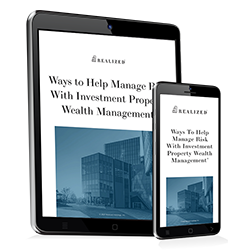%20risk%3F-1192866996.jpg?width=750&height=392&name=What%20is%20duration%20(horizon)%20risk%3F-1192866996.jpg)
Investing is always linked to the risk of losing your investment capital – the cryptocurrency crash of May 2022 and ensuing collapse of the Luna coin from $119 in early April to a mere eighth of a penny just over a month later is a painfully clear example of how billions of dollars of investment capital can be vaporized.¹
Investors risk capital for the tradeoff of generating returns. Generally, higher-risk investments such as options, initial public offerings, and venture capital offer the potential to generate higher returns than lower-risk investments such as money market funds, treasury bills, certificates of deposit, and fixed annuities.²
The difference between expected returns on individual stocks and the yields generated by risk-free assets that have the same investment horizon is called the equity risk premium. It’s a measure of the additional returns investors receive for taking on additional risk when investing in equities markets.
Let’s take a closer look at equity risk premium, as well as provide a method to calculate it.
How to Calculate Equity Risk Premium
Equity risk premium can be defined as the spread between potential returns from stock investments and the yield that can be gained from risk-free assets, assuming that both types of investments are held for a comparable investment horizon. Investors are assuming a higher degree of risk for the former, and expect to be compensated at a higher rate of return for increasing their exposure to risk.
When calculating equity risk premium, the standard “zero-risk” proxy is the 10-year U.S. Treasury note. This bond is theoretically risk-free since it’s assumed the government will not default on its debt obligations because it can always print more money. This investment has a fixed interest coupon payment schedule along with a clearly defined maturity date for return of investment principle. ³
Investors seeking higher returns, however, will have to assume a greater degree of risk when investing equities over government-issued bonds. If the estimated return on a given stock is 7 percent, while the return on a risk-free 10-year treasury note is 4 percent, then the equity risk premium is 3 percent. This number can move depending on fluctuating market conditions.
Equity Risk Premium Formula
|
Expected market rate of return |
Minus risk-free rate |
= equity risk premium |
The equity risk premium, also called market rate premium, is the potential return that’s above the return provided by a risk-free investment. This premium is the investor's reward for putting his or her investment capital at a higher degree of risk.
The Bottom Line
Riskier investments typically have the potential to provide greater returns. They also increase the spread between investing in a high-risk stock versus a risk-free investment. This spread is called the equity risk premium, and there’s a direct link between that premium and the level of risk associated with an investment – the greater the spread, the higher the risk.
Equity risk premium can be a helpful barometer when calculating the actual rate of return of equity market investments. The concept is based on the tradeoff between risk and reward, but it’s an imperfect science since there’s no way to accurately calculate how a certain stock or the equities market in general will actually perform. Unforeseen circumstances, such as the historical stock market busts we’ve experienced in the past, as well as the tax consequences of an investment, can significantly affect its rate of return. The important factors aren’t part of the equity risk premium calculation.
Sources:
1. Luna Crypto Crash, CNET, https://www.cnet.com/personal-finance/crypto/luna-crypto-crash-how-ust-broke-why-it-matters-and-whats-next/
2. 8 High-Risk Investments That Could Double Your Money, Investopedia, https://www.investopedia.com/articles/markets/121515/8-high-risk-investments-could-double-your-money.asp
3. 10-Year U.S. Treasury Note, Corporate Finance Institute, https://corporatefinanceinstitute.com/resources/knowledge/trading-investing/10-year-us-treasury-note/
This material is for general information and educational purposes only. Information is based on data gathered from what we believe are reliable sources. It is not guaranteed as to accuracy, does not purport to be complete and is not intended to be used as a primary basis for investment decisions. It should also not be construed as advice meeting the particular investment needs of any investor. Realized does not provide tax or legal advice. This material is not a substitute for seeking the advice of a qualified professional for your individual situation. All real estate investments have the potential to lose value during the life of the investment. All financed real estate investments have the potential for foreclosure.


